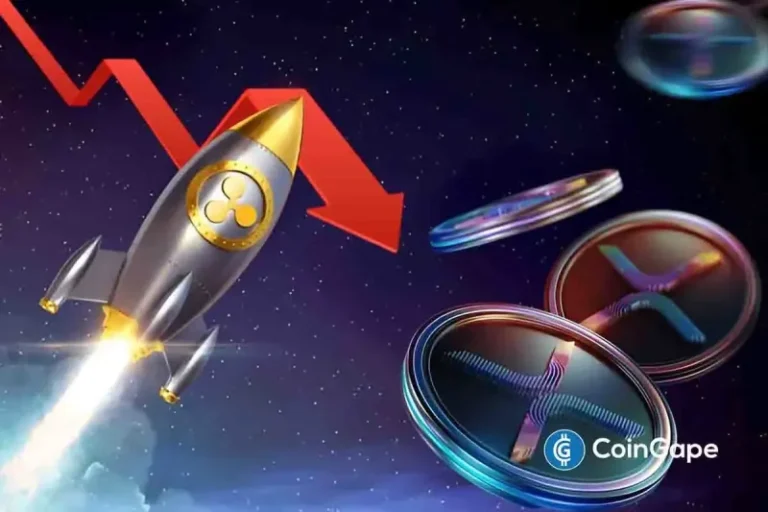Kraken Team of Janover:- A lot has happened with Janover (NASDAQ: JNVR) in the few past days. One of the leading crypto exchanges, Kraken, invested in its private offering fundraising of $42 million last week.
With other investors including Pantera Capital, Arrington Capital, the AI-powered real estate lending firm is also focusing on its Solana Treasury strategy. It is slowly aiming to transition from a fintech company to Web3 pioneer in DeFi.
This all is happening after an all-former Kraken team acquired majority ownership in the company on April 7. The press release revealed the reason to be for “bridging the liquidity gap between Traditional Finance and Decentralised Finance.” In fact, Janover is soon set to rename to “DeFi Development Corporation” with a new ticker symbol.
But, let’s come straight to the point:- Why are former Kraken Executives Interested in Janover? Before it, the firm was purely AI platform focused on connecting the lenders and borrowers in the real estate market.
Decoding the Acquisition by Kraken Team
The Kraken team has notably bought 728,632 shares of Janover common stock with its share witnessing a whopping 1,000% surge soon after it unveiled its treasury strategy. The impressive market performance highlights the bullish response on its DeFi amibitions and transitions.
A CNBC report compared its renewed ambitions with that of becoming the next “MicroStrategy” but for Solana. As of April 13, 2025, MicroStrategy – now operating under the name Strategy – holds 531,644 bitcoins,
Janover’s bid is evident on the surface. It is following a bold new treasury strategy architected by former Kraken management executives.
As part of its new Treasury Strategy, Janoger on April 11 completed purchase of $5 million of Solana (SOL) tokebs. This brings its total Solana holdings to 83,084 worth $9.6 million. It immediately started staking it’s SOL immediately for revenue yields.
Further, Janover operates in the $3 trillion+ U.S. commercial real estate (CRE) sector—a space that’s historically underserved by tech.
This gives Kraken-aligned investors a “real-world asset” (RWA) entry point. The company plans to rename itself to DeFi Development Corporation, signaling a serious pivot to Web3-first business models.
Notably, Kraken recently expanded to TradFi with the launch of Stock & ETF Trading.
As part of the transition, Janover aims to become the first U.S.-listed company offering public market investors direct exposure to Solana’s ecosystem.
The Company also aims to operate one or more Solana validators. This is aimed at enabling it to stake its treasury assets, participate in securing the network, and earn rewards that can be reinvested.
The broader goal, according to the company, is to build a transparent, long-term value engine that compounds net asset value (NAV) and serves as a scalable gateway to DeFi within public equity markets.
Notably, as per the revelation, Janover isn’t pivoting away from its core—it’s enhancing its fintech model with blockchain principles.
Who are the Kraken Team Members Leading Janover Now?
Following the acquisition, the Board of Directors appointed Joseph Onorati as Chairman and CEO, and Parker White as Chief Investment Officer and Chief Operating Officer.
The new leadership, including Joseph Onorati as CEO and Parker White as CIO/COO, brings extensive experience from the crypto industry.
1. Joseph Onorati served as Chief Strategy Officer at Kraken Digital Asset Exchange. He also founded and led a high-frequency crypto market maker and briefly served as interim CEO at CaVirtEx, Canada’s first Bitcoin exchange, which was acquired later by Kraken.
2. Parker White was the Director of Engineering at Kraken Digital Asset Exchange. He currently operates a Solana validator with $75 million in delegated stake and previously managed a $2 billion bond portfolio at an institutional investment firm.
Additionally, Marco Santori, former Chief Legal Officer at Kraken, has also joined Janover’s Board of Directors.
However, Janover’s founder, Blake Janover, and Director and Audit Committee Chair William Caragol continue to on the board to ensure continuity in the company’s operations.
Notably, Janover isn’t a whitepaper project — it’s a revenue-generating commercial lending platform in a $3T+ real estate market. This proves to be a safer bet for Kraken Team than pure crypto startups – for leading and securing space in DeFi.
Next Microstrategy?
Janover is making this transition at a strategic time. With institutions warming up to stablecoins, tokenized U.S. Treasuries, DeFi yield products, it can have an edge in its ambitions.
Janover’s treasury pivot could position it as a leader in real-world asset integration, which Kraken-affiliated strategists are likely bullish on.
But it is still to early to see it in par with Microstrategy. Investors can keep an eye as its future plans unfold.
The post Kraken Alums Drive Janover’s New Treasury Strategy – Is the Next MicroStrategy in the Making? appeared first on CoinGape.




